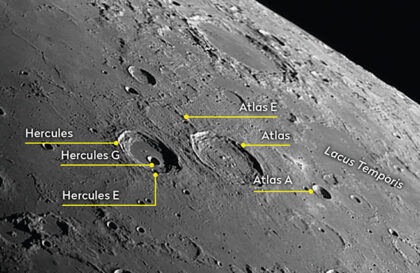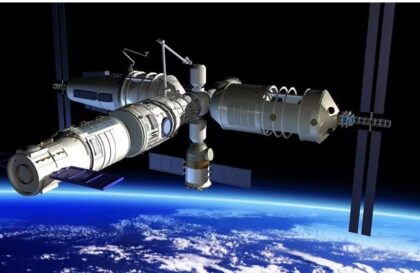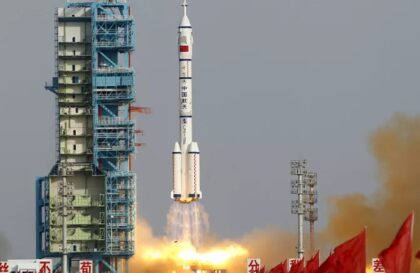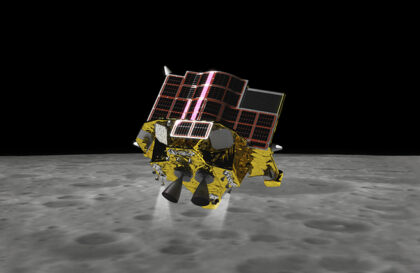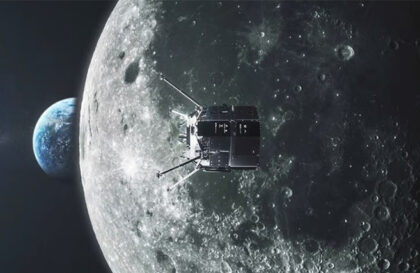The Japanese Akatsuki spacecraft failed to enter Venus orbit.
Its engines burned for less than three minutes, much less than it took to enter Venus orbit. The probable cause of the engine failure was salt deposits that had jammed the valve between the helium boost tank and the fuel tank. As a result, combustion in the engine was rich in oxidizer, causing high combustion temperatures to damage the throat and nozzle of the combustion chamber. A similar steam leak problem destroyed NASA’s Mars Observer probe in 1993.
Orbit insertion error
Akatsuki was planned to begin orbital insertion operations by igniting the orbital maneuvering engine, and the burn would continue for twelve minutes to the initial orbit of Venus with an apocentric altitude of 80,000 km (50,000 mi), a periapsis altitude of 300 km (190 mi), and an orbital period 30 hours.
After the probe went into the shadow of Venus, communication with the probe was interrupted. When it recovered, it turned out that the probe was not in the orbit of Venus but in a heliocentric orbit. The probe drifted around the Sun parallel to Venus with an orbital period of 203 days (Venus’s orbital period is 225 days).
It took six long years of hard work by scientists and engineers before the probe returned to Venus orbit and began its mission. This was the apparatus’s first significant achievement and Japan’s first successful mission on another planet.
Now, the orbital period of the probe is about ten days, with an apoapsis of 360,000 km and a periapsis altitude of 1000 to 10,000 km.
Credit: ISAS/JAXA
Mission scientific operations
The orbiter began its two-year “routine” science operations in mid-May 2016.
The Venus Climate Orbiter AKATSUKI studies the atmosphere of Venus using five cameras for photography in the infrared, visible, and ultraviolet spectra. The unit also has a stable generator to monitor altitude characteristics such as temperature. It analyzes volcanic activity, lightning, atmospheric composition, and movement as it moves in an elliptical orbit around Venus for about ten days.
Venus is Earth’s “sister” due to its similar size but with an extreme atmosphere, including high pressure and warming carbon dioxide. Strong “super rotations” in the upper atmosphere, developing at speeds of up to 100 m/s, remain a mystery. The Akatsuki apparatus improves understanding of meteorological processes on Venus and holds out hope for expanding knowledge about the atmospheres of other planets, including Earth.
An image of the night side of Venus with the AKATSUKI 2-μm Camera (IR2). In the dark areas, the light is absorbed by CO2 clouds. Credit: Wikipedia (public source).
An image of the surface of Venus with the AKATSUKI 1-μm Camera (IR1). Credit: Wikipedia (public source).
The mission is in jeopardy again
But six months later, in December 2016, the 1 µm and 2 µm near-infrared cameras (IR1 and IR2) became unavailable for observation due to an electronic failure. The mission was again in jeopardy.
Its long-wave infrared camera, ultraviolet imager, and lightning and airglow camera remained in operation.
Images from the Akatsuki orbiter showed jet wind streams in low and middle clouds at altitudes of 45 to 60 kilometers. This phenomenon was called the “equatorial jet of Venus.” In 2018, a new and mysterious morphology of complex cloud cover was discovered near the transition between upper and middle clouds. In 2017, 3D maps of the structure of the Venusian atmosphere were published, including data on pressure, temperature, vapor density, ionospheric electrons and their variations.
Wavelengths observed by Akatsuki. Credit: Akatsuki/ ISAS / JAXA
The probe completed the initial and extended phases of the mission.
Its main purpose is to study weather conditions on Venus, confirm the presence of lightning in dense clouds, and search for signs of active volcanism. The probe is still in orbit around Venus and is transmitting data.
There has yet to be a planned end date for the mission.
Spacecraft and subsystems
Akatsuki (“Dawn”), designated initially “Planet-C,” also known as the “Venus Climate Orbiter.”
The Akatsuki bus is a box measuring 1.6 x 1.6 x 1.25 m with solar panels, an antenna, and a maneuvering motor. Its launch weight with fuel was 480 kg, including 34 kg of scientific instruments.
The Akatsuki spacecraft has a two-component maneuvering engine with a power of 500 N and 12 single-component control engines of different thrusts. It is stabilized in 3 axes using reaction wheels and attitude sensors, including a gyroscopic inertial instrument, star trackers, solar sensors, and accelerometers.
The solar panels can produce over 1200 watts of power in Venus orbit and are rotatable. The energy can be used directly or stored in batteries. Communication is provided via a 20 W X-band (8 GHz) transponder using different antennas for different types of communication. Temperature control uses insulation, radiators, and heaters to keep the temperature inside the ship below 20°C.
Akatsuki continues to study Venus. Credit: STP/ISAS/JAXA/Akihiro Ikeshita
Scientific instruments
1. Camera 1.1 µm (IR1)
2. Camera 2.2 µm (IR2)
3. Long wave infrared (LIR) camera
4. Ultraviolet Imager (UVI)
5. Lightning and airglow chamber (LAC)
6. Ultra Stable Oscillator (USO/Radio Science)
There have been 46 space flights to Venus (including gravity flybys). As of 2020, the Soviet Union, United States, European Space Agency, and Japan have conducted missions to Venus.
By 2030, NASA will send two robotic missions to Venus: Davinci+ and Veritas. These two sister missions aim to understand how Venus became a hell-like world capable of melting lead on the surface.
The Russian Venera-D mission is scheduled to launch on November 11, 2029.
Banner image: JAXA/ Akihiro Ikeshita
Image credit:
https://akatsuki.isas.jaxa.jp
https://nssdc.gsfc.nasa.gov
https://en.wikipedia.org
https://akatsuki.isas.jaxa.jp
https://www.stp.isas.jaxa.jp

